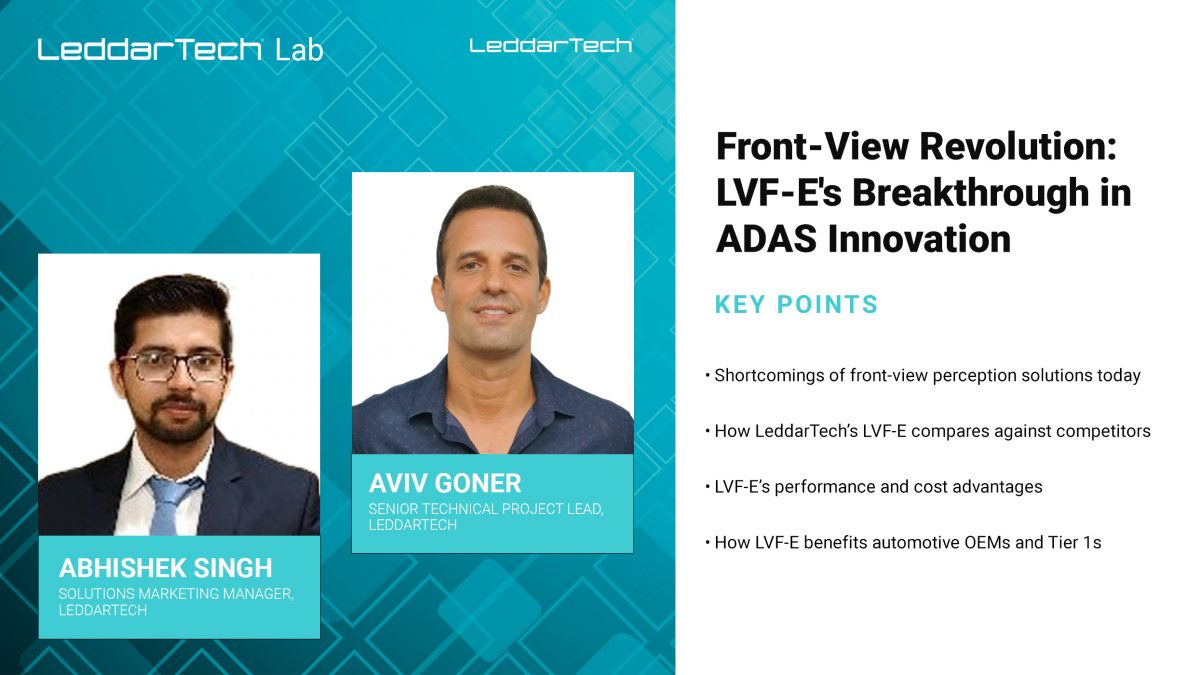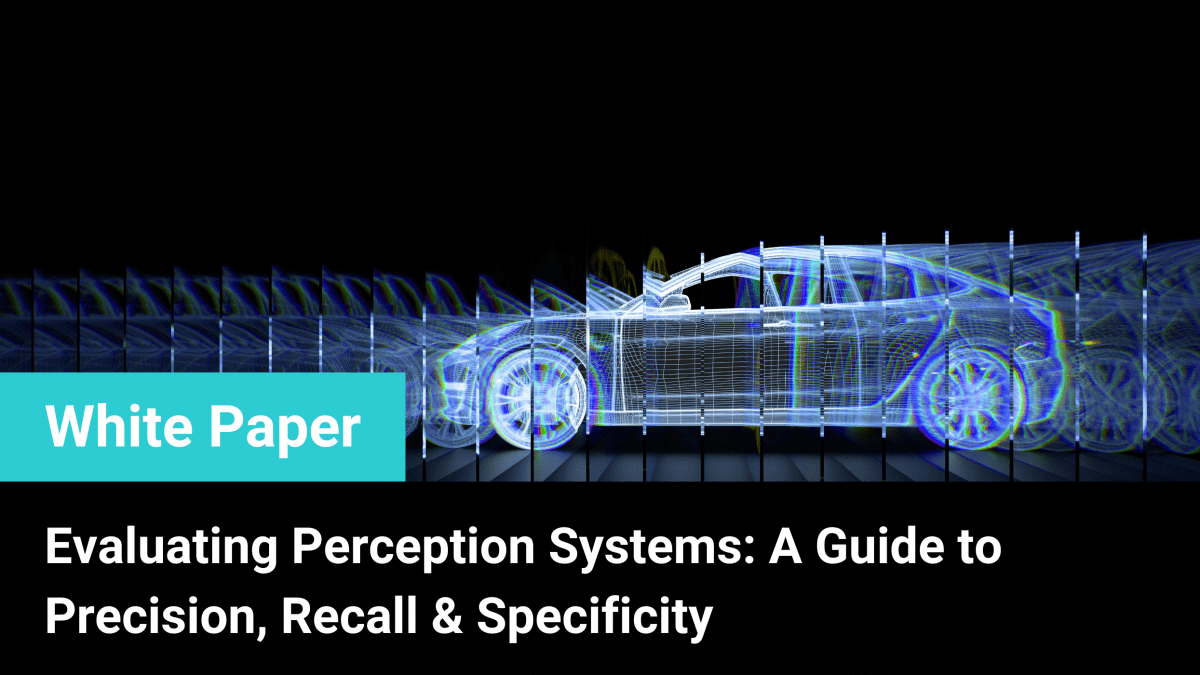From Racetrack to Roadway: The Impact of Motorsport on Automotive Innovation
This episode on the LeddarTech Labs features Ed Bernardon, former Vice President of Motorsports/Racing Strategy at Siemens Digital Industries Software and Pierre Olivier, CTO of LeddarTech and well-known industry speaker at ADAS and AD technology events and conferences. They discuss how innovation in the motorsports has an influence on on-road vehicles, especially within the domains of ADAS and AD and the rise of autonomous racing series across the world.
Podcast Transcript
Michelle: Hello and welcome to the LeddarTech Lab podcast. I’m your host Michelle Dawn Mooney. Today we will discuss the intersection of autonomous vehicle racing and automotive technology for passenger vehicles. To talk more on this we are joined by two guests Ed Bernardon and Pierre Olivier. Ed Bernardon is an expert in vehicle technology, design and motorsport innovation with more than 30 years of experience as the former vice president of motorsports racing strategy at Siemens Digital Industry Software and focused on integrating advancements from racing into everyday vehicle technology. His expertise includes autonomous and connected vehicles, lightweight structures and sustainable motorsports.
Pierre is LeddarTech’s CTO and is recognized for his technical expertise and vision. He has decades of experience developing high-tech products and is a well-known industry speaker at ADAS and AD technology events and conferences.
Welcome to both of you. Good to have you here. Looking forward to this conversation today.
Michelle: Pierre, how do you see the advancements in autonomous racing technology influencing consumer autonomous vehicles in the next, say five to ten years?
Pierre: That’s a good question. I think one of the things is, and we touched on this a bit earlier about like the personality of the AI because one of the things if you look at today’s autonomous vehicles, the AI tends to be by the way it’s trained very, very conservative, very prudent way of driving, which is not how we as humans are driver, whereas where actually even the challenge is these things will stop to halt if they’re not certain about what decision to take, which and one of the challenges is how these will interact well with human drivers because human drivers will not, like for example, like you’re supposed to stop your vehicle completely at stop sign and then pause and start again. Nobody does that. When I taught my children to drive, it was like, that’s what you learn. That’s what you’ll do in your driver test, but don’t do that. And this is the same where if, of course, if an AI is capable of driving at close to tens on the racetrack, he may probably be better positioned to interact normally with traffic and it will make a better driver on the street again. So I think we’ll see significant improvements in the quality or behavior of the AIs as a result of that on the track experience. But also, of course, we’re going to make simulation better and simulation is a cornerstone of autonomous driving. We’re going to make perception better because you need to be able to detect objects at very high speed and challenging conditions. We’ll make the control loop better. So I think overall, just like Ed was mentioning how technology trickled down from race into production vehicles, we’re going to see the same thing where it’s going to translate into better safety, better driving experience, but also it will address some of the challenges, the fear that people have that autonomous driving will take the fun away from driving.
Now, it may be a completely different experience where, for example, I can turn the race mode on in my autonomous vehicle and get the experience of riding with, I don’t know, even maybe famous Formula One driver. So it will bring different use cases, which I think some of the promise of autonomous driving was that it would, of course, it would address the safety issues. It would help address also some of the like urban congestion and all that stuff. But there never was any part of how you put like fun into this. So I think now is the occasion to get some of that and get people excited about not just the technology aspect, but really also using it on a daily basis.
Ed: Well, you know, and to think about what might be the ultimate in fun would be to actually have the wheel of a real race car at 200 miles per hour, turning you towards that wall and knowing exactly when to hit the brake. And if you think about what Pierre was saying, imagine that you had an autonomous race car that was capable of doing 200 miles an hour, but it has room for a human to sit in there with the steering wheel. And it’s also smart enough to know how capable that human is so that it’ll just, we like to think of it sometimes as a guardian angel. If you’re making a mistake and not hitting that brake too soon or the accelerator too fast, it adjusts. And over time, the guardian angel sits back more and more till eventually, you know, this probably takes a little bit of natural talent to throw yourself at 200 miles per hour into a very, very tight turn. But, you know, you can at least take you to where you get the greatest thrill that your natural capabilities are going to allow you to have. But these are the types of things that are now in their infancy.
And Pierre’s mentioned several times simulation. I mean, there’s people watch other people play video games. And simulation certainly is going to be part of development. So when they show up at the track, that autonomous car is going to do what it’s supposed to do. But it can also become almost even a form of entertainment that can be coupled in with the actual racing where maybe you could put yourself into a simulated race and actually compete with your avatar, that type of thing. So it’s exciting because it’s really bringing two exciting areas together, both in the physical and I guess you could say in the virtual digital twin world.
Michelle: Yeah, and I think it’s interpretation too of fun because I’m hearing you in 200 miles per hour, my husband would totally agree with you. I, on the other hand, I think we need to be on the stands. Because I don’t know if that would constitute fun for me, but watching somebody else do it, he would love it. So finally, before we wrap things up, I’ll ask for a prediction. Which automaker do you think will win the race to wide scale AV deployment on the road?
Ed: Well, maybe taking a little bit from the autonomous racing world, since it’s in its infancy, the number one thing right now is gathering data. And it’s all about having the data that you can do training on of your stack, of your AI driver. And I think right now Tesla and Waymo probably are the leaders there and having the most data. So I predict that they’ll probably be up there. I think China, companies like Baidu and Pony, they have even more data. The government invests more over there, takes a leading role, and a little bit more on fast tracking of regulations so they can even collect more data and more development. So they’ll probably be out in front, I would think, if not already, certainly soon. I think when you say widespread use, in specific locations, in gated areas, say like May Mobility has already had like 10,000 riders in their shuttles. Nuro is a delivery. They do deliver pizzas or whatever in their little teeny autonomous delivery cars. I just got off the plane in Amsterdam, maybe three, four weeks ago, and there was an autonomous shuttle by, I think it’s Omeo, I think was the name of the company, and they also have shuttles at Kennedy. So those type of applications. And I think maybe one that we don’t think about too often, and one of my favorites in this area, which is agriculture, is a Monarch tractor. They make an autonomous tractor, and the CFO of that company, Chief Farming Officer, is Carlo Mondavi. He’s the grandson of Robert Mondavi, the Napa Valley, the person who really created Napa Valley almost. So I don’t know, that’s sort of the way I see it.
Michelle: What about you, Pierre?
Pierre: Yeah, I think Ed has a very good point that basically whoever delivers real value in specific applications stands a good chance of taking the pole position to stay in the racing team. But certainly, I think what we’re seeing now is we’re seeing, of course, level two solutions get better and better. And with this level two plus, like concept, but I think whoever delivers a real mind off level three type solution, even if it addresses specific scenarios, which could be, for example, urban congestion, or it can be highway driving, but in a truly trustable solution where I can do something useful while it’s driving me maybe to the next race event, is going to stand a good chance of taking a very, very large share of deployment, because that’s what people really want. And certainly, level two ADAS technology is very useful, of course, it’s saving lives and so on. But three, the true promise of having something that drives for me on like for public or private, privately owned vehicle is still not quite there. And I think the first to get there will definitely, it will transform the way we interact with cars today.
Ed: You know, I think the ultimate test about this is, I like to ask people about, would you be comfortable putting your kids by themselves into an autonomous shuttle and having it take them to school? And when the majority of people say yes to that, then I think we’re there. But I don’t quite think we’re there just yet. Would you be willing to do that? Would you be willing,
Michelle?
Michelle: Well, I was going to say, Ed, should we get a prediction year on that? Because I think you’re right with that. We don’t have that full, close to 100%, maybe even not that close to 100%, but conversations like the one we’re having today and hearing the technology that’s out there and seeing what we can learn from something we typically think of as fun and entertaining, right, from the racing aspect. But, you know, Pierre, you said safety, you know, and that buzzword, because really at the end of the day, whether it’s entertainment, whether it’s lifestyle, business, whatever, however we’re traveling, safety is of the utmost importance. So it’s just, it’s really exciting to see. And I’m not going to answer your question. That’s my way of avoiding the answer. Any final thoughts as we’re wrapping up here today?
Pierre: To me, great, great conversation. Very, very good insights. I think certainly it’s quite exciting because we’ve seen this in the past and we’ve seen how the racing technology can really transform ultimately our daily lives. And of course, given the ultimate goal is to try to get as close as possible to zero fatality. It’s a huge potential, but also a huge potential to make like this, because of course, self-driving technology, because it’s taking longer to develop and so on, it’s got sort of like bad reputation now. And certainly I think putting it on the track and see people like seeing how it can perform at very high speeds and so on, it will be a tool also in getting public confidence into the technology. So I think it’s a great opportunity.
Ed: Yeah. And to add to that, I think people have been racing everything since the beginning of humanity probably. And you can go online now, you see people racing scooters and drones and it’s inevitable that you’re going to have autonomous racing. And the fact that it’s bringing all these technologies are so key to so many things like related to AI or sensors or whatever might be. It’s just a matter of time. And I think the most exciting thing about all that is it’s getting a whole new generation of people interested in it. And if you don’t have that, you’re not going to have anything. I know when I was growing up, knowing how to adjust a carburetor or spark plugs or whatever, that was high tech in cars. And now the difference between a race car or an autonomous vehicle or an iPhone or whatever it might be, not so different anymore. It’s all sort of coming together and they’ll all play off of each other.
Michelle: Interesting to see how things have transpired thus far and really will be interesting to see where things go from
here. From racetrack to roadway, we’re talking about the impact of motorsport on automotive innovation. I want to thank our guests today, Ed Bernardin and Pierre Olivier for joining us on this conversation. Very insightful, very exciting. Once again, I don’t know about fun for me, 200 miles per hour, but I know a lot of people would find that fun. But the end of the day, we’re learning so much with having these two kind of overlap here. So thank you for being here today. Really interesting conversation. I know a lot of people probably learned more than they ever thought was possible to know about this because we really could be here for hours talking about all the technological advancements with us, but appreciate your time today.
Ed: Oh, thank you. And Michelle, we can hit the dial or the touch screen and we’ll limit it to 50 miles per hour, 25,
whatever you want. I could do video, but I don’t think I could be in the car, but we’ll see. We’ll talk after. Thank you again for being here today. And I want to thank all of you for tuning in and listening to the LeddarTech Lab podcast and be sure to
subscribe and check out our other episodes of the LeddarTech Labs podcast. Thanks again for joining us. I’m your
host, Michelle Dawn Mooney. We hope to connect with you on another podcast soon.
Browse the Podcasts Watch Episode 1 of Podcast






